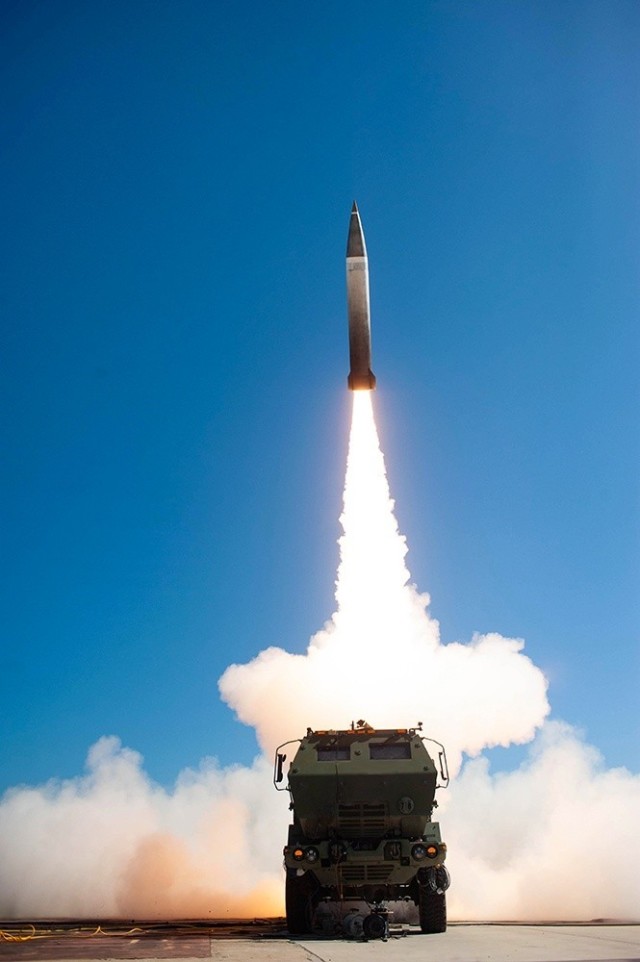On December 8, 2023, the US Army announced the receipt of the first batch of new PrSM (Precision Strike Missile) missiles in the first serial version of the Increment 1 Early Operational Capability. High-precision "shorter-range" missiles (in terms of arms agreements) PrSM manufactured by Lockheed Martin Corporation should replace the ATACMS operational and tactical missiles in service in the US Army.

Launch of the new American Lockheed Martin PrSM (Precision Strike Missile) missile from the combat vehicle of the M142 HIMARS missile system (c) US Army
The PrSM missile is launched from modified launchers of the M142 HIMARS and M270A2 MLRS ground-based missile systems, but, unlike ATACMS, the M270A2 MLRS launcher must house four PrSM missiles (instead of two ATACMS), and the M142 HIMARS launcher must house two PrSM missiles (instead of one ATACMS). The PrSM missile has an officially declared range of 499 km, although in fact its range is estimated to be at least 550 km, and more likely up to 700-800 km.
According to the data provided in the press, the solid-fuel PrSM rocket has a length of 4 meters, a body diameter of 430 mm and carries a 91 kg warhead (possibly borrowed from the GMLRS rocket). The guidance system in the first version of Increment 1 is inertial satellite. However, since 2020, the combined multichannel homing head under the Land-Based Anti-Ship Missile (LBASM) program has been working out for the next version of the PrSM Increment 2 missile, which will make it possible to hit moving targets, primarily marine ones, as well as air defense systems.
The Precision Strike Missile (PrSM) program has been implemented by the US Army since 2016, involving the creation of a new generation high-precision missile with an official initially declared range of up to 499 km to replace the existing family of American Lockheed Martin MGM-140 ATACMS tactical missiles.
The PrSM was created on a competitive basis by Lockheed Martin and Raytheon corporations on the basis of contracts worth about $116 million each issued by the US Army in June 2017. Initially, flight tests of missiles from both competitors were planned to begin in July 2019, but were postponed due to delays in the creation of a number of systems by subcontractors.
Lockheed Martin eventually began testing its rocket first, making the first test launch of its version of the PrSM rocket on December 10, 2019. Raytheon, as part of the PrSM program, led the development of a missile under the DeepStrike designation, but repeatedly postponed the start of its tests, which as a result have still not been started, contrary to contractual deadlines (the last announced deadline was the first quarter of 2020). Raytheon cited "technical problems" as the reason. This forced the US Army to decide in March 2020 that it was inappropriate for Raytheon to continue participating in the PrSM program, leaving Lockheed Martin as the sole general contractor for the program.
The PrSM qualification tests were successfully conducted in November 2023 at the White Sands Missile Range (New Mexico). The US Army now expects to achieve initial combat readiness (IOC) of the PrSM Increment 1 missiles now launched in 2025, as well as in 2027 to begin receiving a modified version of the Increment 2 missile with the ability to defeat moving naval targets and ground-based air defense systems. In July 2021, Australia officially became a partner of the PrSM Increment 2 program.
In the subsequent version of PrSM Increment 3, the possibility of adding combat units with increased destructive capability is being considered. As for the PrSM Increment 4 variant under development (also referred to as Long Range Maneuverable Fires - LRMF), which may be ready even earlier than Increment 3, the US Army is considering a new missile form factor, possibly with a new propulsion system for hitting targets at a range of more than 1000 km. This new propulsion system can be a ramjet engine. In early 2023, Lockheed Martin Corporation and a consortium of Raytheon Technologies and Northrop Grumman received contracts from the US Army to develop a new rocket form factor and propulsion system for the PrSM Increment 4 (LRMF) variant.
The US defense budget for fiscal year 2024 includes the purchase of 110 PrSM Increment 1 missiles in the amount of $377.8 million and permits the conclusion of multi-year package contracts for the supply of a total of 1,100 missiles. In addition, the US Department of the Army should submit a plan to accelerate production to 400 missiles per year as soon as possible. Also, $ 5 million was allocated for the development of maneuvering submunitions for PrSM - apparently, the Increment 3 version.
jpg" title="Launch of the new American Lockheed Martin PrSM (Precision Strike Missile) missile from the M142 HIMARS missile system combat vehicle">
Launch of the new American Lockheed Martin PrSM (Precision Strike Missile) missile from the combat vehicle of the M142 HIMARS missile system (c) US Army

